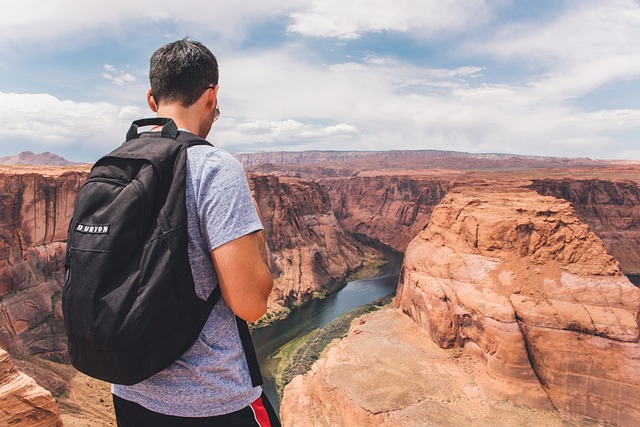Hiking in high temperatures can be an exhilarating and rewarding experience, but it also comes with unique challenges and risks. High temperatures can quickly lead to heat exhaustion and heatstroke if proper precautions are not taken. As a seasoned hiker, I know the importance of being prepared and staying safe on the trail.
In this article, I will share my expertise and knowledge on how to hike safely and comfortably in high temperatures. I will provide practical tips and strategies for preparing for the hike, staying cool on the trail, and recognizing and treating heat-related illnesses. If you follow these guidelines, you can have an enjoyable and successful hike in high temperatures while minimizing the risks.
Preparing for a High-Temperature Hike
Before embarking on a hike in high temperatures, it’s essential to prepare adequately to ensure your safety and comfort on the trail. Here are 5 great tips for preparing for your hike:
- Research and plan ahead: Do your research and plan your route in advance. Look for trails that offer plenty of shade and have water sources available along the way.
- Selecting the right trail: Choose a trail that matches your skill level and fitness. In high temperatures, it’s best to stick to well-maintained trails that offer shade.
- Check the weather forecast: Monitor the weather forecast before heading out, and choose a day with moderate temperatures. Avoid hiking during the hottest part of the day.
- Gear up appropriately: Wear lightweight and breathable clothing, and make sure you have comfortable and supportive footwear. Don’t forget to bring a hat, sunglasses, and sunscreen.
- Carry plenty of water and electrolytes: Bring enough water to last the entire hike and consider bringing electrolyte supplements or sports drinks to replenish your electrolyte levels. It’s best to drink small amounts frequently throughout the hike rather than gulping down large amounts at once.
Hiking in High Temperatures
Once you have prepared adequately for your hike, it’s time to hit the trail. Here are some tips for hiking in high temperatures:
- Start Early: Start your hike early in the morning to avoid the hottest part of the day.
- Pace yourself: Hike at a slower pace than usual and take frequent breaks. Don’t push yourself too hard, especially if you are not used to hiking in high temperatures.
- Take breaks often: Take frequent breaks in shaded areas or near water sources to rest and cool down.
- Stay on shaded areas: Whenever possible, stay in the shade to avoid direct exposure to the sun.
- Wear lightweight and breathable clothing: Choose clothing made from moisture-wicking and breathable fabrics to keep you cool and dry.
- Protect your skin and eyes: Wear a hat, sunglasses, and sunscreen to protect your skin and eyes from the sun’s harmful rays.
- Consider wearing a hat: A hat with a brim or neck flap can provide additional protection from the sun.
- Use a trekking pole: Using a trekking pole can help you maintain balance on uneven terrain and can take some of the strain off your legs.
- Know your limits: If you start feeling dizzy, lightheaded, or nauseous, it’s time to stop and rest in the shade. Pushing yourself too hard can lead to heat exhaustion or heatstroke.
Always listen to your body and take breaks whenever you need them.
Staying Safe in High Temperatures
Staying safe in high temperatures requires being aware of the signs of heat-related illness and taking appropriate measures to prevent them. Here are five tips for staying safe on the trail:
- Signs of heat exhaustion and heatstroke: Heat exhaustion is a milder form of heat-related illness that can cause symptoms such as dizziness, headache, nausea, and fatigue. Heatstroke is a more severe form of heat-related illness that can cause symptoms such as confusion, rapid heartbeat, and loss of consciousness.
- How to recognize and treat heat exhaustion and heatstroke: If you or someone in your group shows signs of heat exhaustion or heatstroke, it’s essential to take action immediately. Move to a shaded area, remove any unnecessary clothing, and drink cool water. If symptoms persist or worsen, seek medical attention immediately.
- Tips for staying cool on the trail: In addition to taking frequent breaks in shaded areas, you can use a bandana soaked in cold water to wrap around your neck or head to help cool you down.
- When to call for help: If someone in your group is showing signs of severe heat-related illness such as heatstroke, call for emergency medical assistance immediately.
- Safety tips for hiking in a group: Hiking in a group can provide additional support and help monitor for signs of heat-related illness. Make sure everyone in your group is aware of the risks of hiking in high temperatures and knows how to recognize and respond to heat-related illnesses.
Remember to always stay hydrated, take frequent breaks in shaded areas, and listen to your body.
Is Hiking in the Rain Safe? Challenges and Rewards of Rainy Hiking
Post-Hike Care
Post-hike care is just as important as pre-hike and on-trail care. After a hike in high temperatures, it’s essential to take the following steps to recover and ensure that you don’t experience any lasting effects of heat-related illness:
- Hydrate and replenish: Drink plenty of water and electrolyte-rich fluids to replenish the fluids and electrolytes lost during the hike. Avoid caffeine and alcohol, as they can further dehydrate you.
- Check for any signs of heat-related illness: Monitor yourself and your hiking companions for any signs of heat exhaustion or heatstroke, such as nausea, dizziness, or headache. Seek medical attention if symptoms persist or worsen.
- Rest and recover: Rest and recover after your hike in high temperatures. Take it easy for the rest of the day, avoid strenuous activities, and get plenty of sleep to allow your body to recover fully.
By taking these steps, you can recover from your hike and minimize the risks of the long-term effects of heat-related illness. Always take the necessary precautions when hiking in high temperatures, and don’t hesitate to seek medical attention if you or someone in your group shows signs of heat-related illness.
Conclusion
In conclusion, hiking in high temperatures can be a challenging and rewarding experience, but it also comes with unique risks and challenges. By following the tips and guidelines outlined in this blog post, you can prepare adequately for your hike, stay safe and comfortable on the trail, and recover fully after your hike.
Don’t forget to always stay hydrated, take frequent breaks, and listen to your body. Hiking in high temperatures can be an enjoyable and exhilarating experience, as long as you take the necessary precautions and respect the environment. Stay safe and happy hiking!
Next, read The Hiking Gear Checklist Every Hiker Need.










